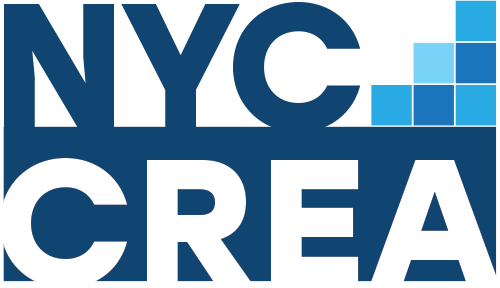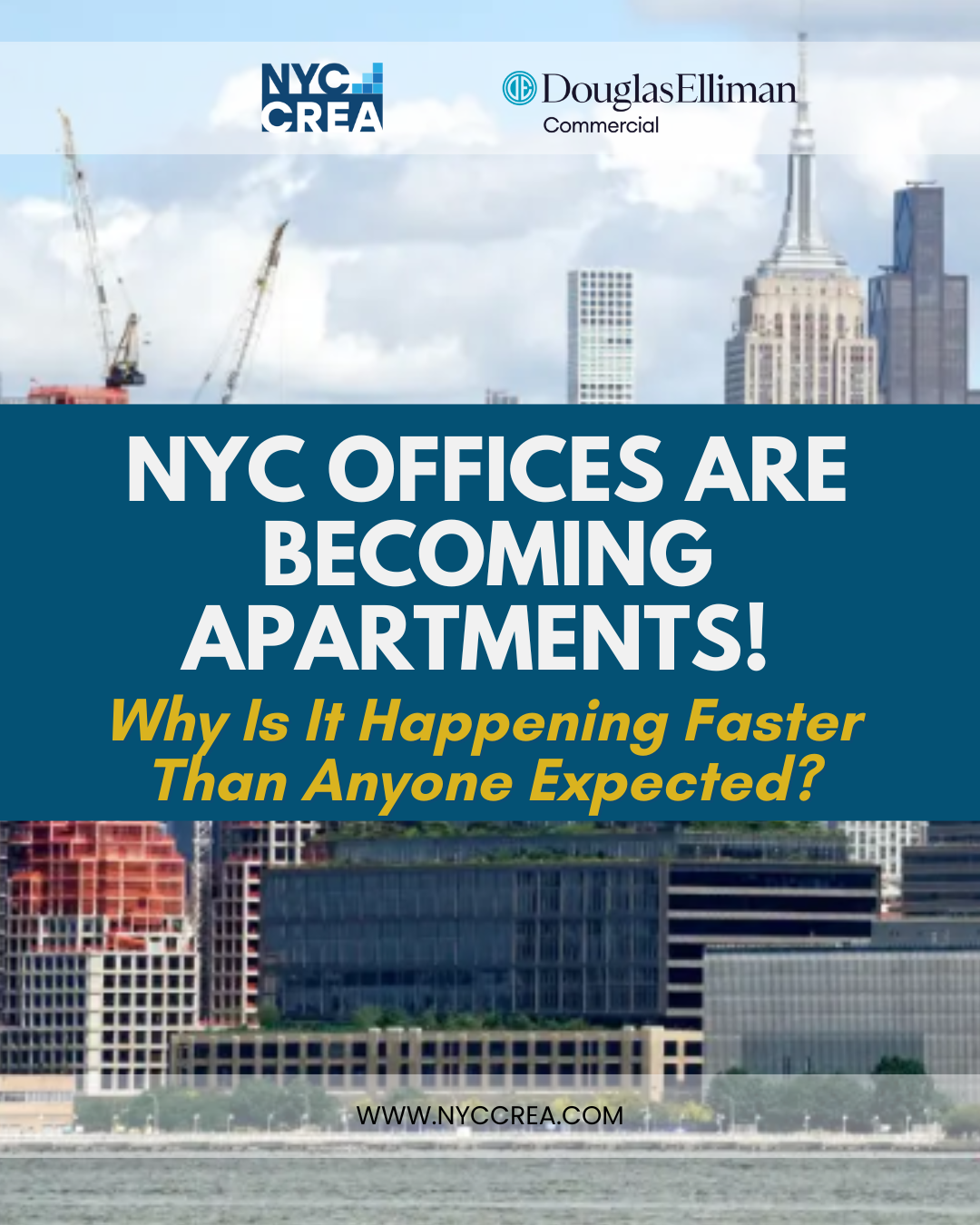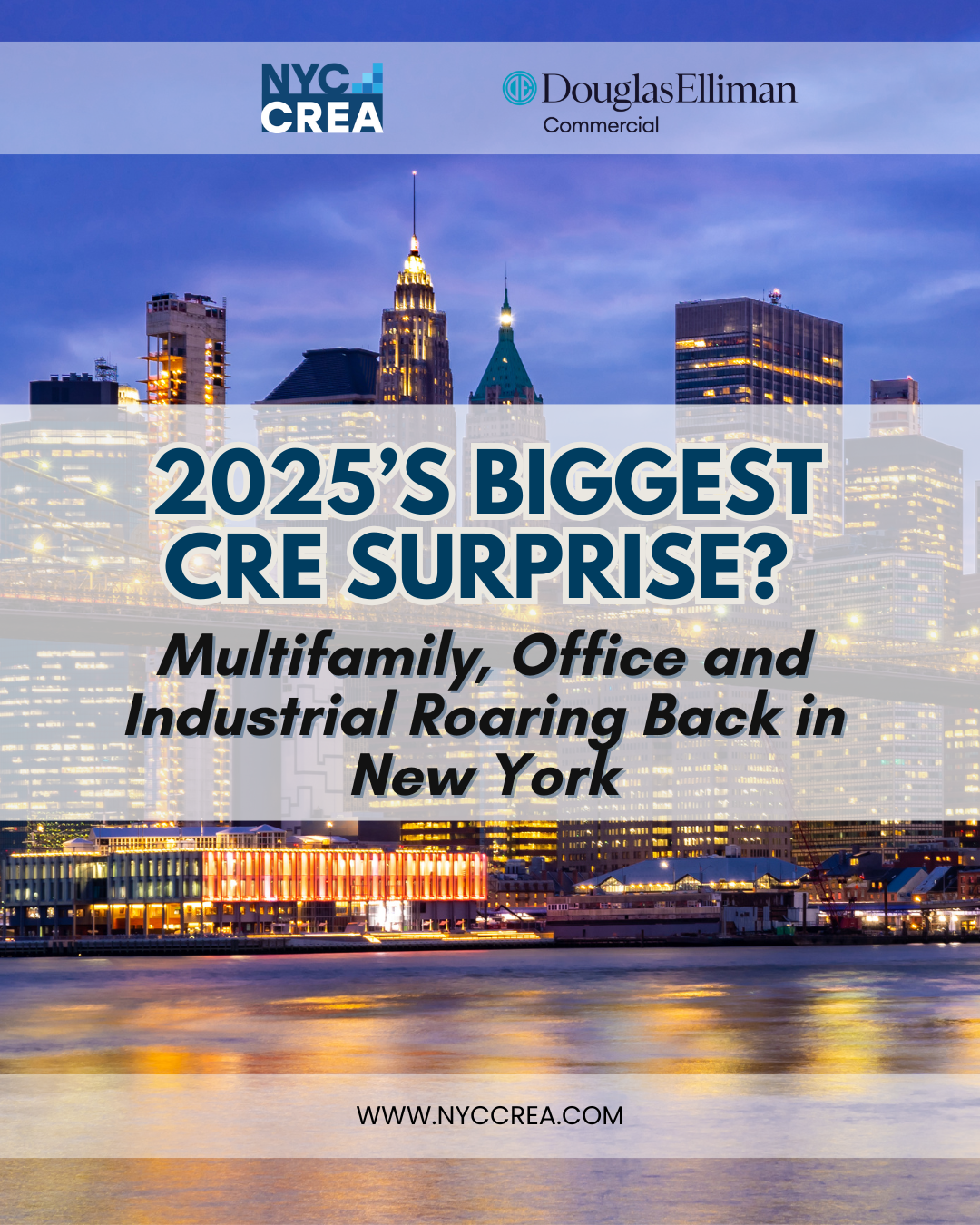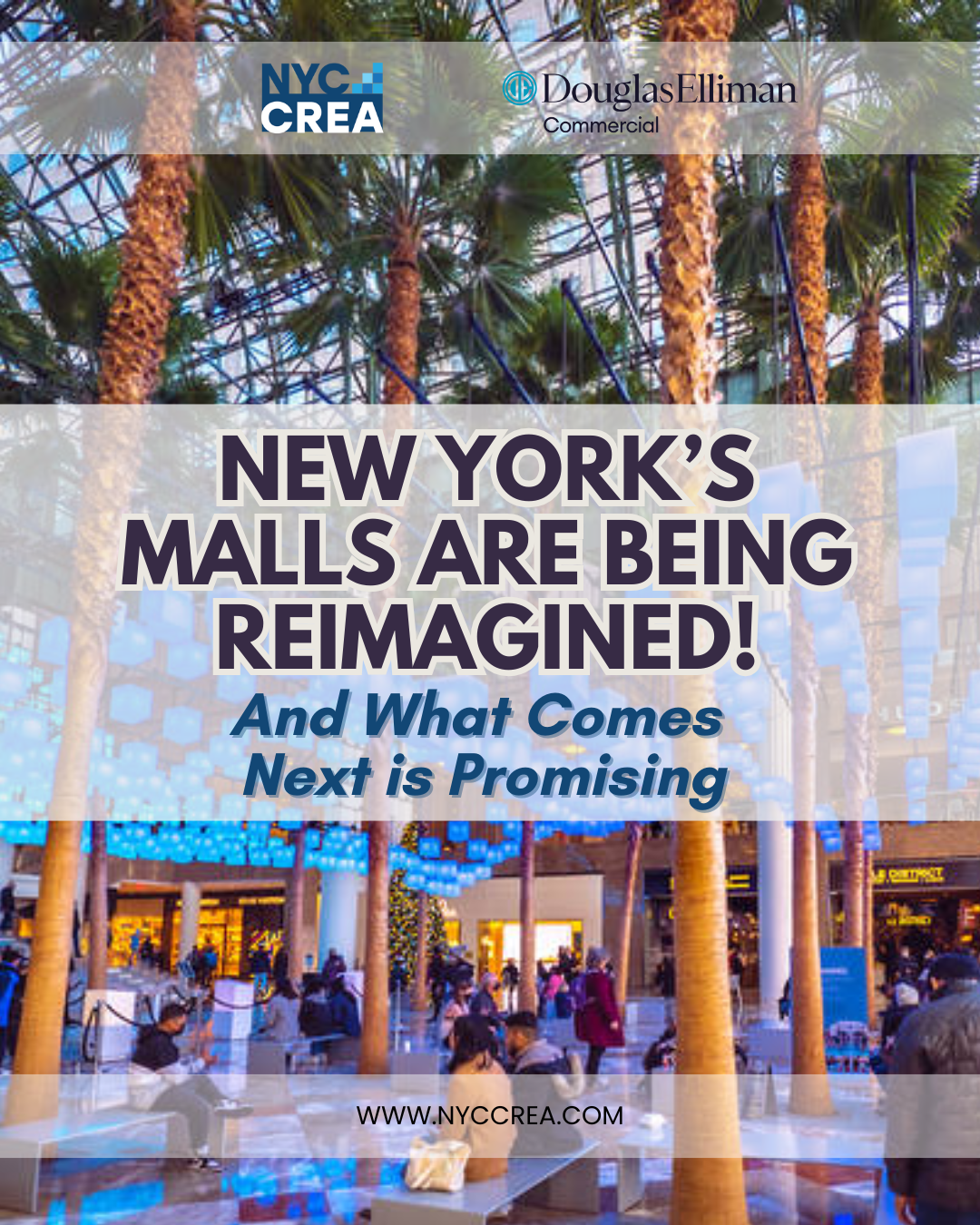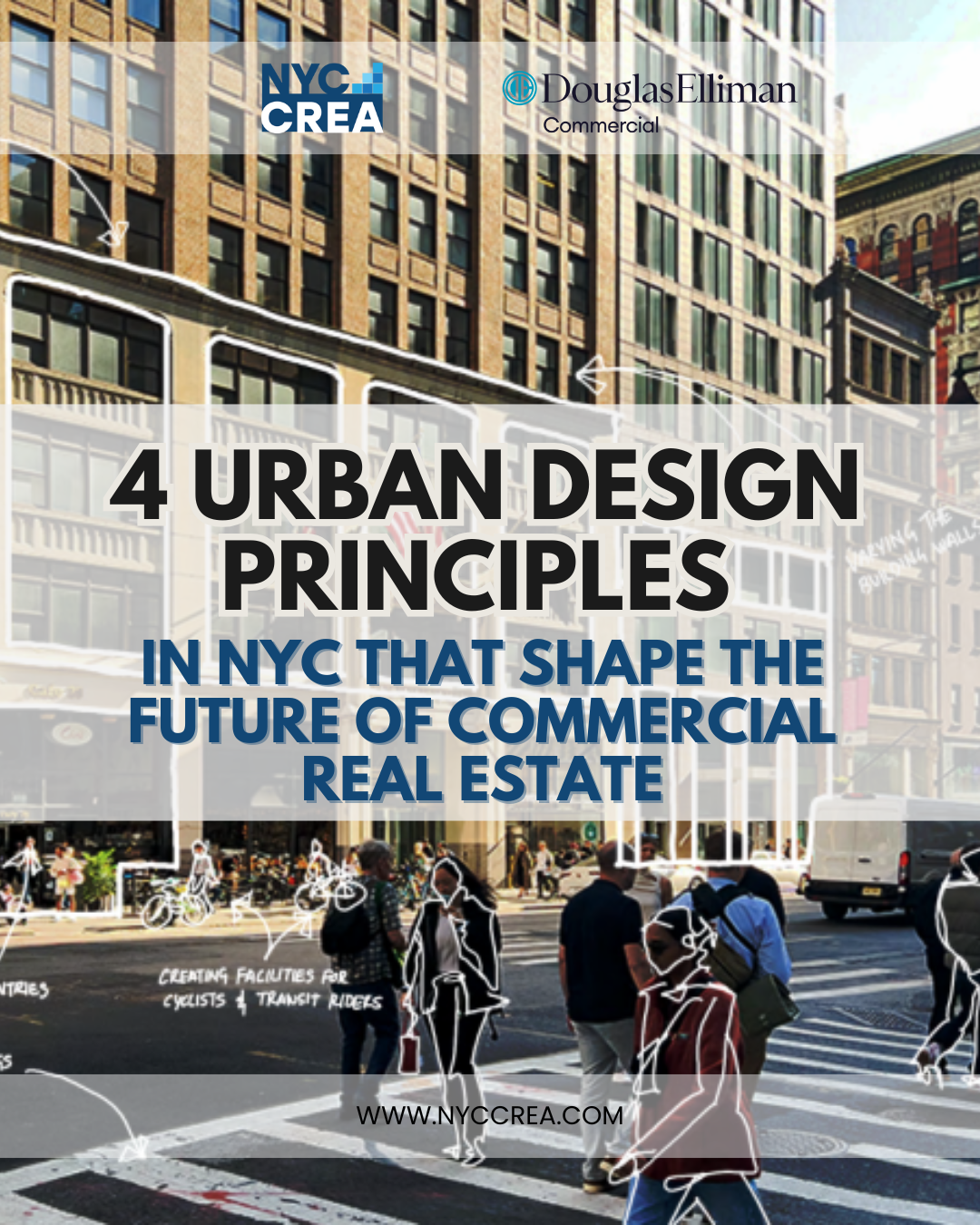June 25, 2025
- 13 Million Sq. Ft. Converted: Updated residential density laws and tax incentives propelled the conversion of offices into residential units in New York City’s Financial District.
- 100 Office Buildings: A 2025 analysis revealed that the 100 Manhattan office buildings with the highest availability, mostly in the Financial District, Chelsea, Park Avenue South/Madison Square, and Times Square, accounted for nearly 40% of the city’s total available office space.
- Not a Solution, but a Positive Force: Office-to-residential conversions, while not a complete solution for Manhattan’s excess office space, positively impact both the office and housing markets.
A paradigm shift is underway in Manhattan’s real estate market. In a city defined by its monolithic towers of corporate power, a quiet but powerful evolution is taking place: Underutilized office buildings are being reborn as much-needed housing. According to CBRE’s 2025 Research Brief, the City of Yes plan, a major update to the city’s zoning code, significantly expands opportunities for office-to-residential conversions, making over 130 million square feet of office space eligible for housing development—critical at a time when the city faces a severe housing shortage.
This conversion trend isn’t speculative—it’s data-backed and policy-supported. As of January 2025, an analysis of Manhattan’s highest-availability office buildings identified 44 properties, totaling 10 million square feet, as prime conversion targets. These conversions could yield up to 10,000 new housing units and shift 4 million square feet of tenant demand into the market.
For developers and investors, this is more than a market trend—it’s an inflection point. From my vantage point monitoring across the commercial real estate sector, I see this as an opportunity not just to create housing but to write the next chapter in Manhattan’s urban history. With the right capital, vision, and alignment with evolving policy, these conversions can produce enduring value for stakeholders and communities alike.
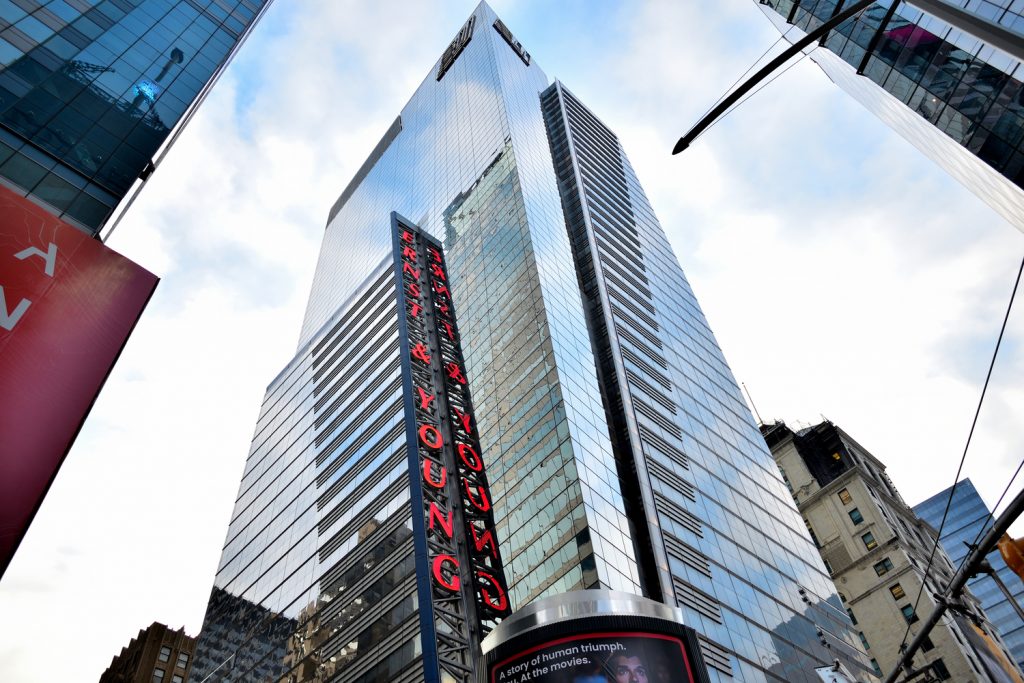
Historic-to-Present Trends in Conversions
The Financial District’s conversion to residential units in the late 1990s was a response to high office vacancies caused by companies moving to Midtown, despite an unproven demand for housing in the area at the time. In contrast, Midtown’s current conversion efforts benefit from an existing residential population, numerous hotels, and more favorable citywide growth trends than the Financial District experienced during its own transformation.
Since 2021, new laws and regulations have fueled a surge in office-to-residential conversions. While current incentives demand higher labor wages and housing affordability, relaxed zoning and density rules now permit the conversion of larger, more recently built offices (up to 1990), a change that was crucial for the Financial District’s earlier transformation and is already impacting the conversion market.
Conversions have shifted from isolated events to a strategic response to macroeconomic forces. Notably, 2024 marked a policy inflection point with several landmark zoning reforms, like the City of Yes, poised to unleash a wave of redevelopment. The City of Yes zoning reform significantly expanded areas in Midtown and Midtown South eligible for office-to-residential conversions. Furthermore, the Midtown South Mixed-Use plan, anticipated to pass by late 2025, could further boost this trend by rezoning 42 blocks of former manufacturing and struggling office space for residential use.

Top Manhattan Submarkets for Conversion Potential
Geography plays a pivotal role in the conversion narrative. Between 2016 and 2020, nearly two-thirds of converted office space was in the Financial District, with over 90% in buildings built before 1961. Of the announced or underway office-to-residential conversion projects, nearly 60% of the square footage is located in Midtown. The increasing number of buildings slated for conversion from office-to-residential use reflects and furthers trends that emerged during the pandemic as seen in these submarkets.
- Midtown
Midtown is leading New York City’s new wave of office-to-residential conversions, with an unprecedented surge in projects. Developers are actively transforming underperforming properties across the district, including larger and more modern office buildings, with 60% of the current conversion square footage located in Midtown and a median building age of 68 years.
- Financial District
The Financial District’s residential transformation was largely spurred by changes to the Multiple Dwelling Law, which allowed higher residential density for conversions, and the 421-g tax incentive, converting nearly 13 million square feet of offices into residential units. Between 2016 and 2020, almost two-thirds of city conversions occurred in the Financial District, predominantly in pre-1961 buildings. - SoHo/NoHo
Benefiting from the recent City of Yes rezoning, SoHo/NoHo sees more developments as commercial-to-residential conversions are generally permitted throughout the neighborhood. However, 25% of the new residential floor area must be dedicated to affordable housing.
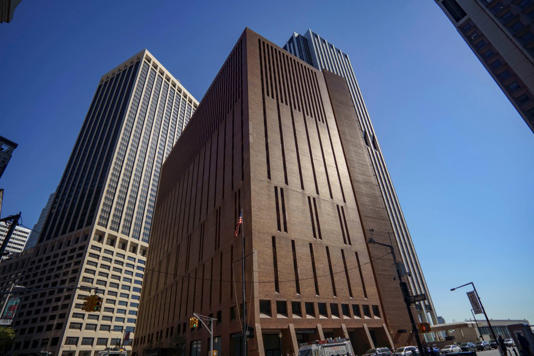
2025 Outlook and Strategic Imperatives
Looking ahead to 2025, the stage is set for a breakout year in Manhattan’s conversion landscape. Office buildings with high availability, totaling 10 million square feet, are prime conversion targets, potentially yielding 10,000 new residential units. If all conversion projects underway are completed, more than 16 million square feet of existing office stock would be removed, resulting in a 200-basis point drop in the availability rate.
The momentum is undeniable. With political support from initiatives like the City of Yes reform and the expansion of tax incentives, conversions are no longer fringe bets—they’re smart, scalable strategies. The biggest risk now is haste. Despite increased opportunities for office-to-residential conversions due to high vacancy rates and companies seeking newer spaces, these projects will likely emerge steadily over time, not as a sudden surge.
As I monitor these trends in commercial real estate, I urge developers, investors, and city planners to seize this moment for continued collaboration. Conversions of offices to residential units won’t fully solve Manhattan’s excess office supply or housing scarcity, yet they will invigorate the city’s commercial areas and improve the appeal of other office properties.
For the latest news, proven strategies, and exclusive opportunities in commercial real estate in New York City and Western Nassau County NY, visit us at www.nyccrea.com
Reference: CRE BRIEF I Adaptive Spaces, 2025
